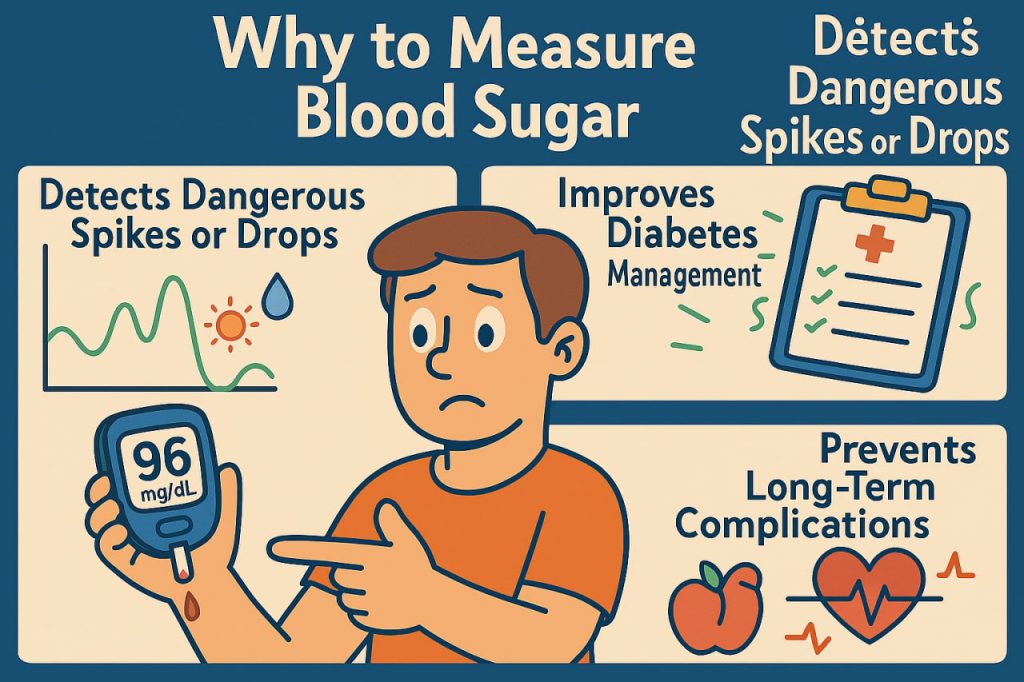What Is Blood Sugar?
Blood sugar, or blood glucose, refers to the concentration of glucose in the bloodstream. Glucose is the primary source of energy for the body’s cells and comes from the food we eat—especially carbohydrates. The hormone insulin helps move glucose from the blood into the cells. Keeping blood sugar within a healthy range is crucial for maintaining energy, organ function, and overall health.
Who Should Monitor Blood Sugar?
While everyone benefits from understanding their metabolic health, regular monitoring is especially important for:
- People with diabetes (type 1, type 2, or gestational)
- Those at high risk for diabetes (prediabetes, family history, obesity)
- Individuals with insulin resistance or metabolic syndrome
- Pregnant women, especially in the third trimester
- Older adults with lifestyle-related health risks
Why Monitoring Matters
1. Detects Dangerous Spikes or Drops
Monitoring helps catch hyperglycemia (high blood sugar) or hypoglycemia (low blood sugar) early—both of which can lead to serious complications if not addressed quickly.
2. Improves Diabetes Management
For individuals with diabetes, measuring blood sugar guides medication dosage, diet adjustments, and physical activity. It helps keep glucose levels in target range and prevents complications.
3. Supports Lifestyle Changes
Monitoring reveals how food, stress, exercise, or sleep affect blood sugar. This empowers individuals to make informed decisions that support better metabolic health.
4. Prevents Long-Term Complications
Uncontrolled high blood sugar can damage nerves, blood vessels, kidneys, eyes, and the heart over time. Monitoring helps reduce this risk by encouraging proactive care.
5. Guides Healthcare Providers
Blood sugar data enables doctors to evaluate how well treatment plans are working and make necessary adjustments based on real-time information.
How to Monitor Blood Sugar
There are several ways to track glucose levels:
- Glucometers: Devices that use a small drop of blood from a finger prick.
- Continuous Glucose Monitors (CGMs): Wearable sensors that provide real-time glucose readings throughout the day and night.
- A1C Test: A lab test that reflects average blood sugar over the past 2–3 months (usually done every 3–6 months).
Always consult a healthcare provider to determine the best method and target ranges based on your individual condition.
When to Test
The timing depends on your health status and treatment plan. Common testing times include:
- Before and after meals
- Before and after exercise
- At bedtime
- During symptoms of low or high blood sugar
Glossary
- Blood glucose – The amount of sugar in your bloodstream.
- Insulin – A hormone that helps glucose enter the cells.
- Hyperglycemia – High blood sugar.
- Hypoglycemia – Low blood sugar.
- A1C Test – A blood test showing the average glucose level over several weeks.


